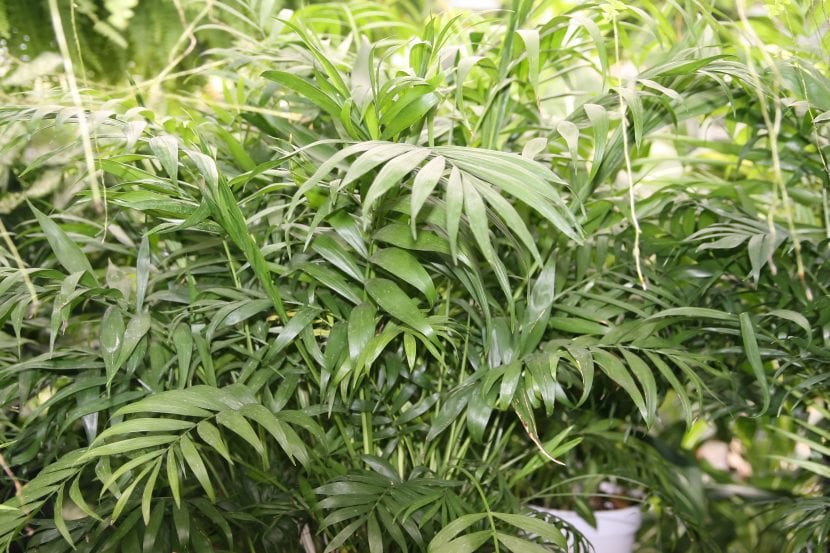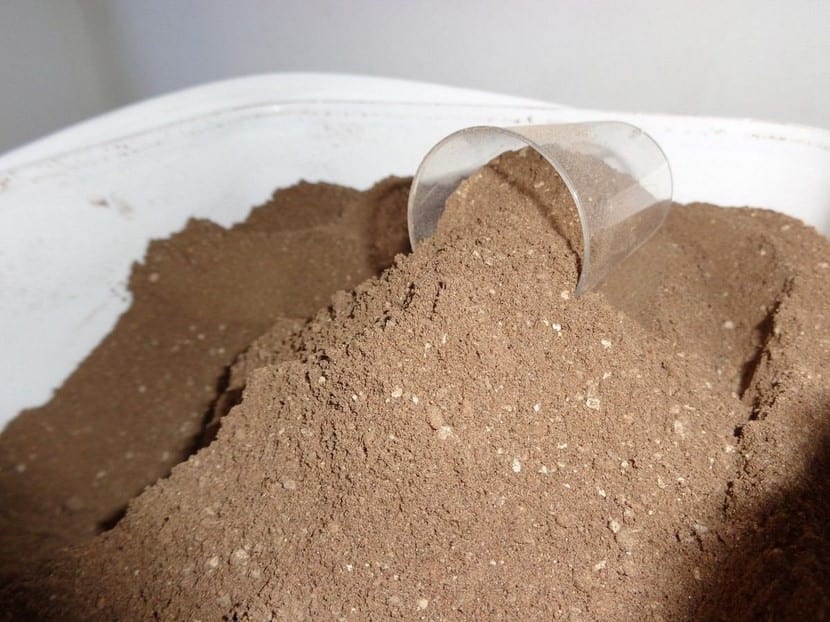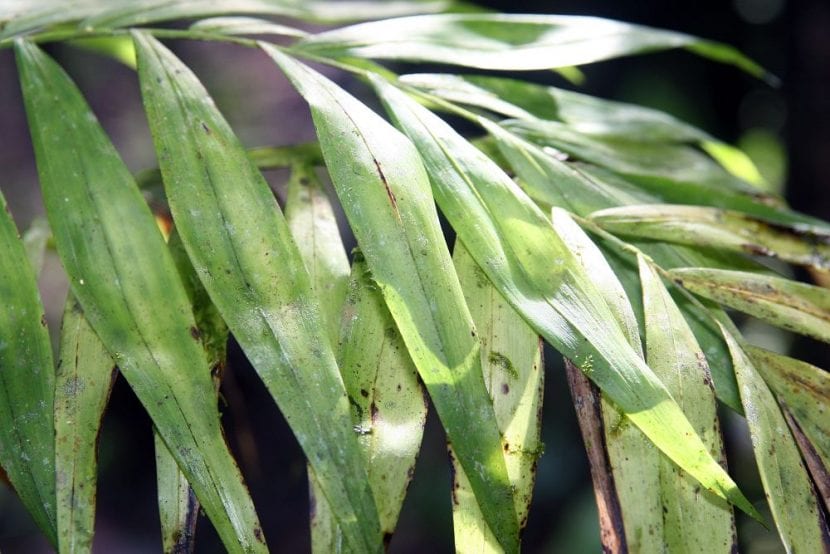
Image - Wikimedia / Bachelot Pierre JP
Few palm trees are as popular as the Chamaedorea elegans. Known as a living room palm tree, it is the typical one that is kept in a pot inside the house, for example in the living room next to the sofa. And it is not only beautiful, but also very economical (a specimen of a little less than a meter in height costs only about 4 euros) and easy to care for.
The question is: What are the care you need to be well, healthy and without problems? If you want to know, then I will solve these and other questions about its maintenance 🙂.
Origin and characteristics

Image - Wikimedia / David J. Stang
Our protagonist is a unicaule * palm (with a single trunk) native to Mexico, Guatemala and Belize whose scientific name is Chamaedorea elegans, although popularly it is better known as the hall palm, pacaya or camadorea. It grows to a maximum height of 3 meters, with a trunk a little less than 2cm thick, ringed and green..
The leaves are pinnate, composed of about 20 pairs of leaflets (pinnae) 15-20cm long by 2-2,5cm, and have a length of 2 meters. The flowers are grouped in highly branched inflorescences, up to 1 meter long, and can be female (of a yellow color that attracts a lot of attention) or male. The fruit is oval in shape, and measures 1cm.
* In nurseries and garden stores, pots full of seedlings or young seedlings that have grown together are sold to make them look more beautiful, but that does not mean that each of these specimens has only one trunk and that, therefore, they are independent of each other.
How to take care of Chamaedorea elegans?
If you want to have a copy, we recommend you take care of it as follows:
Location
It is a plant that can be grown both outdoors (in mild climates) and indoors, so that:
- Interior: it must be in a bright room, away from drafts and passageways. Do not put next to the window to avoid the magnifying glass effect.
- Body exterior:: in semi-shade, under the branches of trees or other large palm trees. Never place in the sun as it burns fast.
Earth
It will depend on where it is planted:
- Flower pot- From experience, it simply does well with universal growing medium (you can get it here) mixed with 30% perlite (like this one they sell here), so there is no need to complicate with other types of substrates.
- Garden: grows in fertile soils, with good water filtration capacity. If yours is not like that, as the palm tree is rather small, make a hole of one 50cm x 50cm (better 1m x 1m), cover the sides and the base with shading mesh (as this) and fill it with the substrate mentioned above.
Irrigation

Image - Wikimedia / JMK
The watering of the palm tree has to be moderate. During the summer you have to water very often, about 3 to 5 times a week, while the rest of the year with 1 or 2 waterings a week may have more than enough. And I repeat: it can.
And it is that if it is grown outdoors in areas where it rains little, the waterings will have to be followed. On the contrary, if it is kept indoors, as the earth takes much longer to dry out, the frequency will be less.
Therefore, it is important to check the humidity of the soil, either with a digital meter or by inserting a thin wooden stick (if when you remove it it comes out with a lot of adhering soil, do not water).
Spray yes or no?
It is customary to spray / spray the leaves of plants that are kept indoors with water, but that more than benefiting them harms them. Why? Because plants cannot absorb water directly from the leaves; in fact, when it rains, the pores on the surface of the blade of each leaf close, thus preventing them from drowning. And they do the same when they are sprayed.
The problem is that if they remain closed too long, they will have very serious problems, as their respiratory capacity is greatly reduced by being able to breathe only through the pores in the trunk and roots. So, let's not pulverize the leaves; they will appreciate it 😉.
If you live in an area with a dry environment, better buy a humidifier or place several glasses or other containers with water on your palm tree.
But beware, don't forget to dust it, with a brush for example. In this way, it will look gorgeous.
Subscriber

Guano powder.
From early spring to late summer It must be paid with a specific fertilizer for palm trees (such as this) following the indications indicated on the package. It is highly recommended to also fertilize with organic fertilizers, such as guano (here you have it in powder, and for here liquid), but do not mix them: use one month one and the next month the other.
Multiplication
It multiplies by seeds in spring-summer. Let's see how to proceed:
- The first thing you have to do is fill a pot with universal growing medium mixed with 30% perlite.
- Then water conscientiously.
- Next, place the seeds as far apart as possible on the surface, and cover them with a thin layer of substrate.
- Then, pulverize the most superficial soil a little.
- Lastly, place the pot outside, in semi-shade, or indoors near a heat source.
Thus they will germinate in about 3 weeks at a temperature of 20-25ºC.
Planting or transplanting time
In spring. If it is potted, transplant every two years to a larger one.
Pests
In hot and dry environments, aphids, red spiders and the mealybugs. All three feed on the sap of the plant, causing yellowing of the leaves. They are dealt with potassium soap o diatomaceous earth. You can get the first here and the second by here.
If it is grown outdoors, it does not hurt to prevent it from paysandisia archon and the Red weevil; especially the first (the weevil does not usually affect palm trees with such a thin trunk). In the links you have information about these pests and the treatments currently available to fight them.
Management

Image - Wikimedia / David J. Stang
Vulnerable to infection by mushrooms Phytophthora (causes neck rot) and Helminthosporium (of leaves). It is treated with fungicide, and watering less.
Problems
- Leaves with dry tips: it may be because the environment is dry, or because it is exposed to drafts (or both).
- Yellow sheets: he has been thirsty.
- Lower leaves brown: depends. If the rest of the plant is fine, it may simply be that those leaves have reached the end of their life; and if not, it is because you are suffering from excess water.
Pruning the Chamaedorea elegans
It's not necesary. You just have to cut the dry, diseased or weak leaves that you see, as well as the inflorescences.
Rusticity
From experience I can tell you that if it is protected supports well up to -2ºC, as long as they are specific and short-term frosts.
Where to buy Chamaedorea elegans?
This palm tree is sold in any garden store, but if you can't find it, here you go:
I hope you liked everything you have read about the living room palm tree 🙂.

The bottom leaves of mine are new, and they dried (brown). It is indoor ..
Is the pot already very small?
It is 30 cm high and its pot will be 2 liters more or less.
Thank you.
Hi Alina.
If it has always been in that pot, we recommend planting it in a larger one because it has probably run out of space.
You can cut the dried leaves if you want.
Regards!
Very good information. Debuting with this beautiful little palm tree in my living room
We hope you enjoy it a lot. All the best.